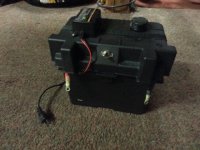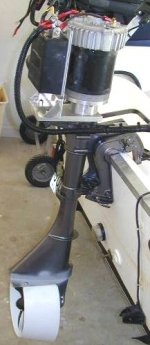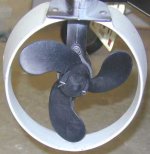I have used trolling motors in many applications--including on inflatable dinghies, a 12 foot Duraboat (with two golf cart 220 amp hour batteries), and then the Torqueedo.
The small trolling motor just does not have enough power in an inflatable against the wind. I had an experience many years ago when a 2 hp gas was not enough power against the wind. So be very cautious.
Rating electric motors in thrust vs HP in gas motors: This is difficult to do, but generally 80 lbs thrust is thought to be equivalent to 1 hp gas engine--so you have to go way up in thrust to equal a 2 hp wide open.
In calm water the small (40 or so lbs thrust) motors work fine. They are light weight. Some are made for salt water, The quality motors are more expensive. For example I have a 83 lb thrust trolling motor, which uses 2 group 27 batteries. (24volts), and has considerable power, but this has a complex mount for a fishing boat, and weight about 60 lbs--so not the lightweight of the smaller motors which are 40 or so lbs thrust.
The salt water rated motors even in the small size start at over $400. How well will the fresh water motors hold up in salt water? I have used one for several years, and washed it with fresh water after each use--but they do start to rust.
The next issue is the size and weight of battery. To be safe you should have the battery in a semi sealed, or at latched box. You do have to use an AGM battery--a flooded lead acid could be catastrophic, with an acid spill.
The weight of a battery more than makes up for the lightness of the trolling motor--and you will have total weight more than the 30 lb small gas outboard. I have used a U1 (garden tractor battery weight in the low 20# range) in several inflatables for the lights and depth sounder/chart plotter. This size is OK even for starting up to 25 hp outboards. But it does not have a lot of time to run a trolling motor because of the low amp hours (32 amp hours).
The advantages or the Torqueedo--It can be put on the dinghy in 3 pieces As I recollect the heaviest is about 14 lbs. Thus it can be more easily handled--and that is one of the major reasons I have one for the dinghy. It also has an integral battery which is far more powerful than the much heavier AGM. It has more thrust than most trolling motors. The down size is two fold--one is cost, another is the shaft length--it is a long shaft--so it has to be carefully managed in shallow water.
If you only have short distances to go, in calm water--the trolling motor will work fine. There is no weight advantage, and there is an issue of charging the battery.
I have a neighbor who has been experimenting with two 40 lbs thrust trolling motors, with kortz nozzles he has made, and using outboard props. He has li ion batteries, and solar panels. He can do a sustained speed of 4 knots all day long (if enough sun) and has a range of about 10 miles to get home, latter in the day. The "boat" is an old Prindle 16 cat, and is very light. He finds for each knot increase in speed he uses twice the power. This will probably hold true for any trolling motor.




